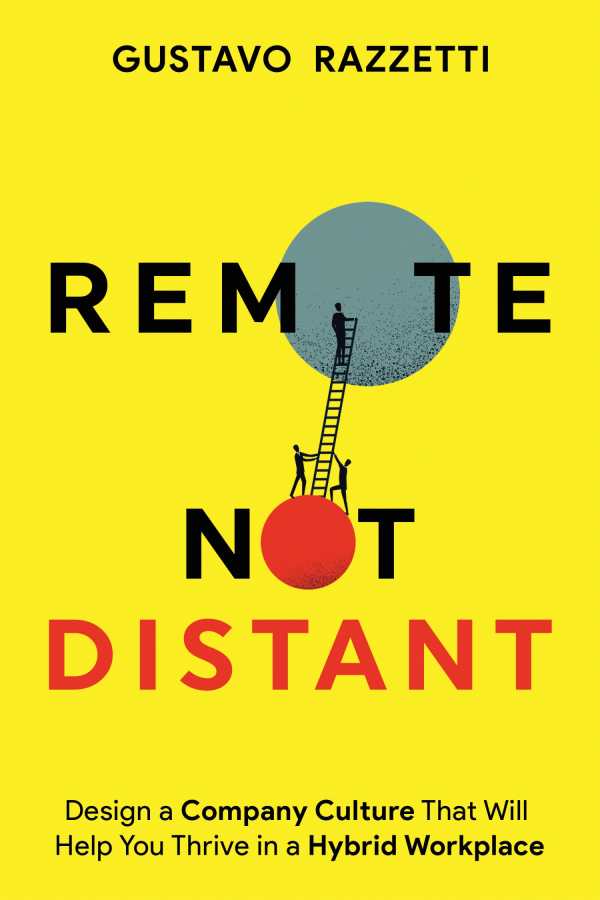Remote Not Distant
Design a Company Culture That Will Help You Thrive in a Hybrid Workplace
Remote Not Distant envisions a new kind of workplace wherein employees have more freedom, and are more productive, collaborative, and innovative, than ever before.
Gustavo Razzetti’s business guide Remote Not Distant is about forming hybrid workplaces that can sustain robust company cultures and shared goals.
Knowing that companies must adapt to changing workplaces by embracing remote and hybrid work, this book provides a blueprint for nurturing workplace cultures that extend beyond the traditional bounds of offices, navigating new normals in which employees have more flexibility but remain united by the same overarching mission. Its work is geared toward managers and company leaders, with instructions on freeing workers from rules, avoiding burnout, and increasing productivity. Topical and timely, it jumps off with an anecdote about Apple CEO Tim Cook asking employees to return to the office after Covid-19; this sets the scene and establishes the stakes. The book also extrapolates from ongoing business trends that are driven by technology, blending contemporary concerns with futurist visioneering.
The writing is lively, pithy, and prone to aphorisms that illuminate topics like core company values, asynchronous collaboration, and work-life integration. It’s also peppered with frequent quotes from tech CEOs from companies including Google and Airbnb that establish its bona fides. Throughout, the book is focused on providing practical tips, as on how to facilitate communication, tap into employee talents, manage conflicts, and keep workers engaged.
Expressing empathy for employees and drawing on extensive interviews with workers, this book’s work is elevated above a mere gospel of productivity. It makes a business case for employee autonomy, valuing employees as people and not cogs in a hierarchy and noting “you can’t call your culture ‘transparent’ if people are afraid of speaking truth to power” and “you can’t pronounce your culture ‘innovative’ if breakthrough ideas are often killed before they see the light of day.” Its approach to such topics is meticulous, resulting in helpful recommendations on creating employee rituals, enacting positive behavioral changes, and cultivating spaces of inclusion and innovation.
With thorough, diverse sources that extract lessons from Amazon, Microsoft, Slack, and other tech companies, the book makes frequent use of illustrative examples, insightful data, and convincing studies. Its anecdotes are apt, as when it alludes to CVS’s decision to stop selling cigarettes to further its corporate mission of advancing health, which made its customers 38% more likely to stop the habit. Regular graphics, pullouts, group session tools, and recaps pop from the page, furthering engagment. And the useful afterword summarizes the book’s main takeaways well, resulting in a call to action that encourages leaders to make the most of the moment.
Remote Not Distant envisions a new kind of workplace wherein employees have more freedom, and are more productive, collaborative, and innovative, than ever before.
Reviewed by
Joseph S. Pete
Disclosure: This article is not an endorsement, but a review. The publisher of this book provided free copies of the book and paid a small fee to have their book reviewed by a professional reviewer. Foreword Reviews and Clarion Reviews make no guarantee that the publisher will receive a positive review. Foreword Magazine, Inc. is disclosing this in accordance with the Federal Trade Commission’s 16 CFR, Part 255.


